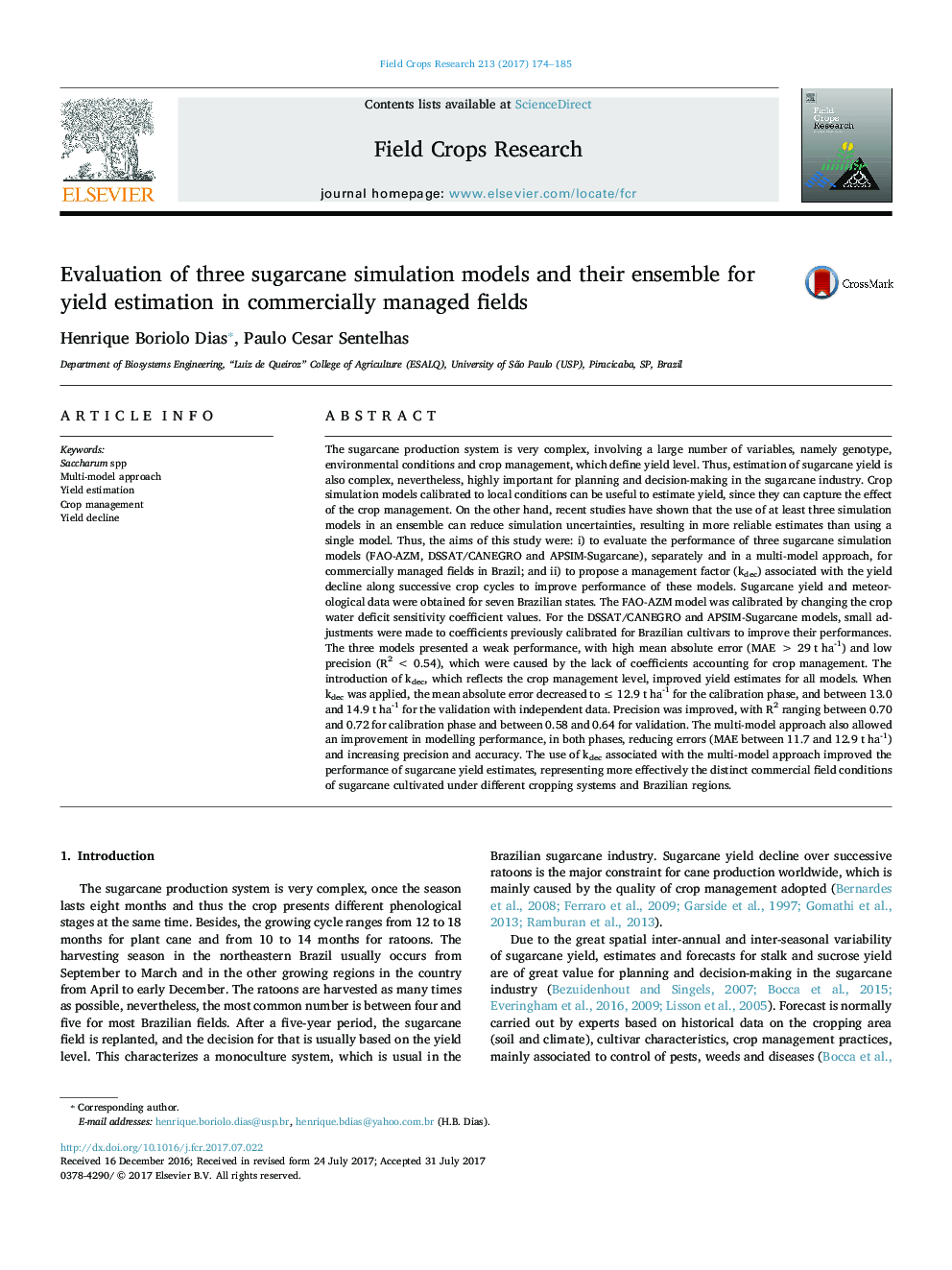| Article ID | Journal | Published Year | Pages | File Type |
|---|---|---|---|---|
| 5761420 | Field Crops Research | 2017 | 12 Pages |
Abstract
The sugarcane production system is very complex, involving a large number of variables, namely genotype, environmental conditions and crop management, which define yield level. Thus, estimation of sugarcane yield is also complex, nevertheless, highly important for planning and decision-making in the sugarcane industry. Crop simulation models calibrated to local conditions can be useful to estimate yield, since they can capture the effect of the crop management. On the other hand, recent studies have shown that the use of at least three simulation models in an ensemble can reduce simulation uncertainties, resulting in more reliable estimates than using a single model. Thus, the aims of this study were: i) to evaluate the performance of three sugarcane simulation models (FAOâAZM, DSSAT/CANEGRO and APSIMâSugarcane), separately and in a multi-model approach, for commercially managed fields in Brazil; and ii) to propose a management factor (kdec) associated with the yield decline along successive crop cycles to improve performance of these models. Sugarcane yield and meteorological data were obtained for seven Brazilian states. The FAOâAZM model was calibrated by changing the crop water deficit sensitivity coefficient values. For the DSSAT/CANEGRO and APSIMâSugarcane models, small adjustments were made to coefficients previously calibrated for Brazilian cultivars to improve their performances. The three models presented a weak performance, with high mean absolute error (MAE > 29 t haâ1) and low precision (R2 < 0.54), which were caused by the lack of coefficients accounting for crop management. The introduction of kdec, which reflects the crop management level, improved yield estimates for all models. When kdec was applied, the mean absolute error decreased to â¤Â 12.9 t haâ1 for the calibration phase, and between 13.0 and 14.9 t haâ1 for the validation with independent data. Precision was improved, with R2 ranging between 0.70 and 0.72 for calibration phase and between 0.58 and 0.64 for validation. The multiâmodel approach also allowed an improvement in modelling performance, in both phases, reducing errors (MAE between 11.7 and 12.9 t haâ1) and increasing precision and accuracy. The use of kdec associated with the multi-model approach improved the performance of sugarcane yield estimates, representing more effectively the distinct commercial field conditions of sugarcane cultivated under different cropping systems and Brazilian regions.
Related Topics
Life Sciences
Agricultural and Biological Sciences
Agronomy and Crop Science
Authors
Henrique Boriolo Dias, Paulo Cesar Sentelhas,
